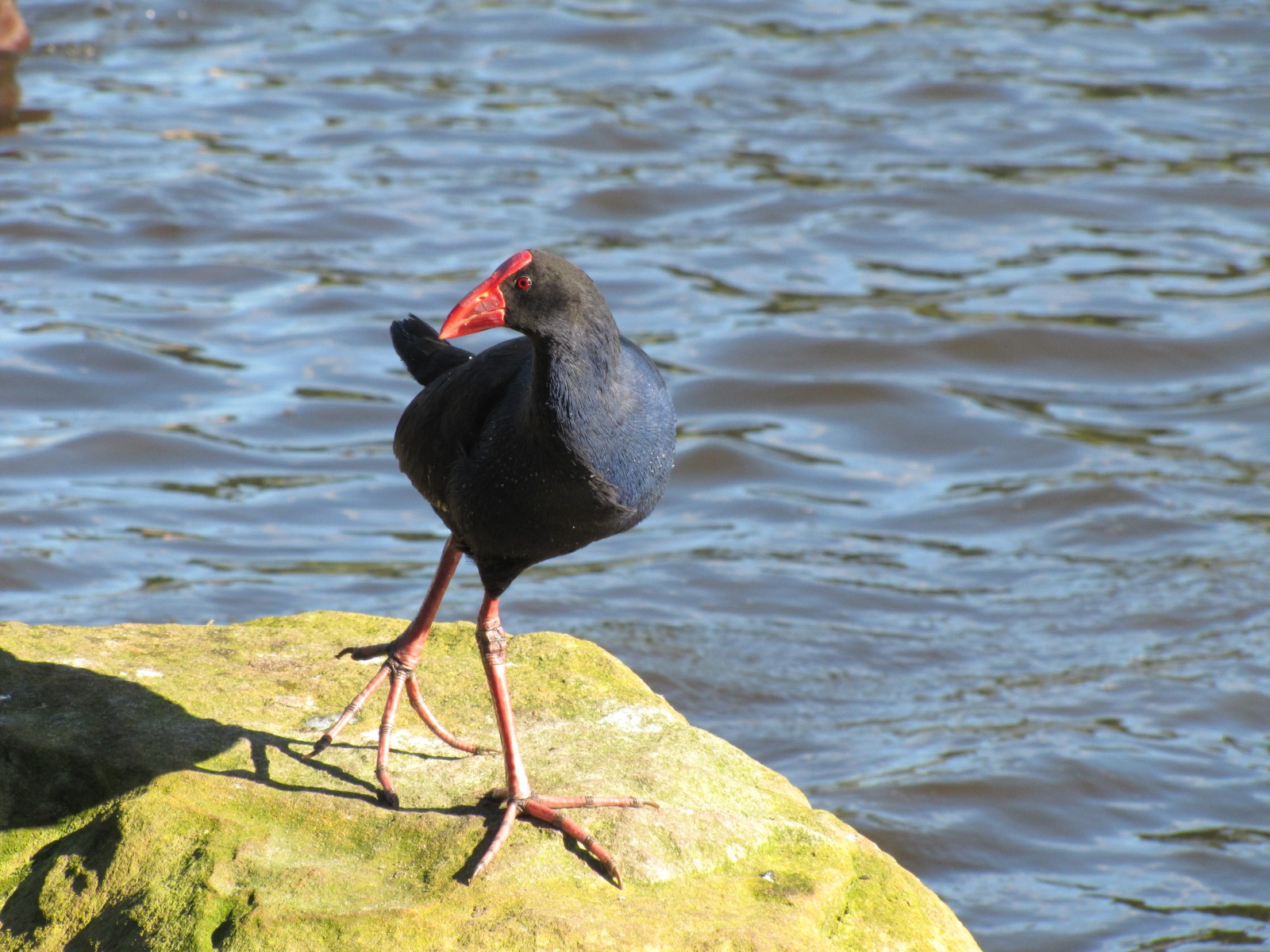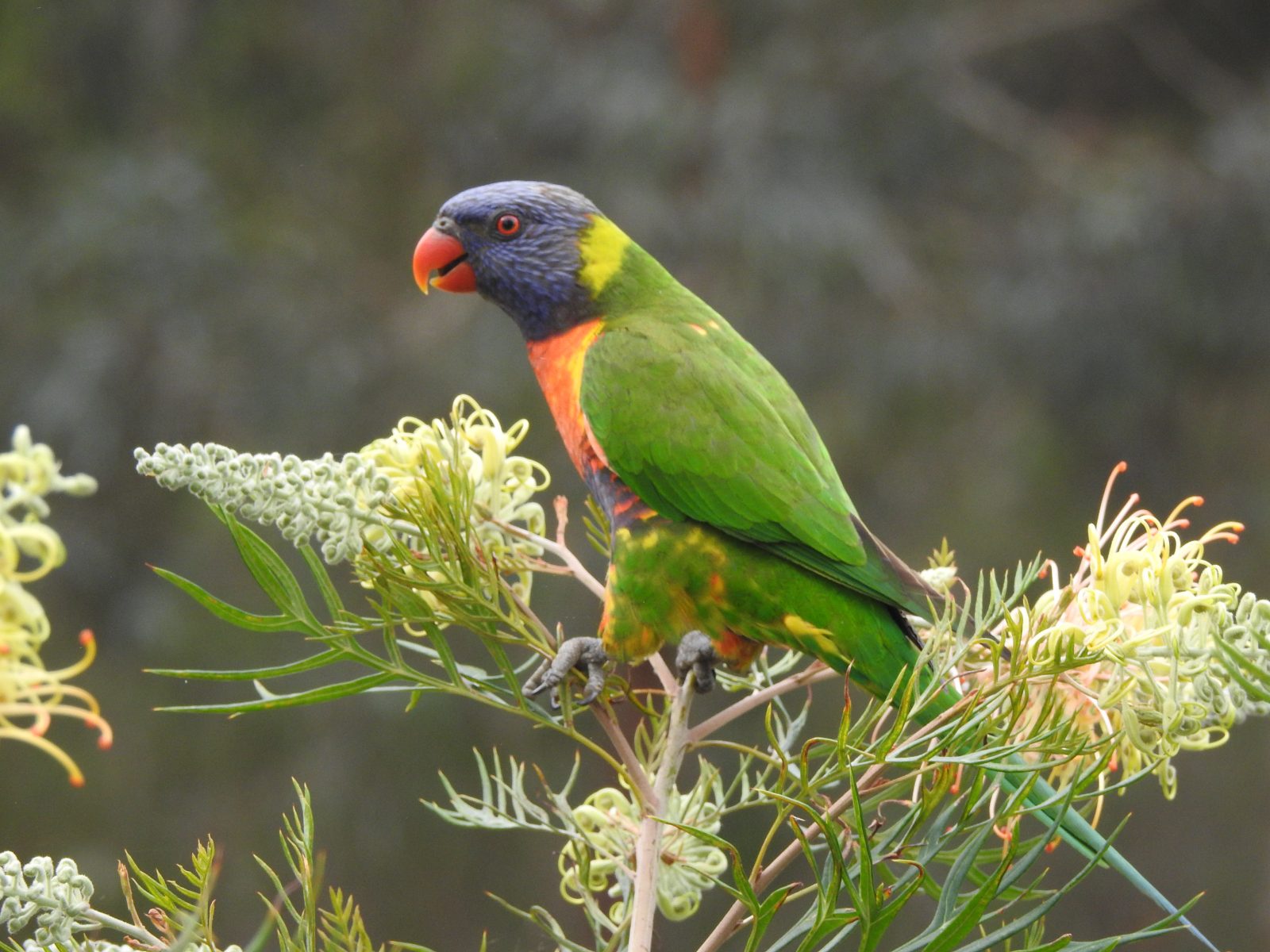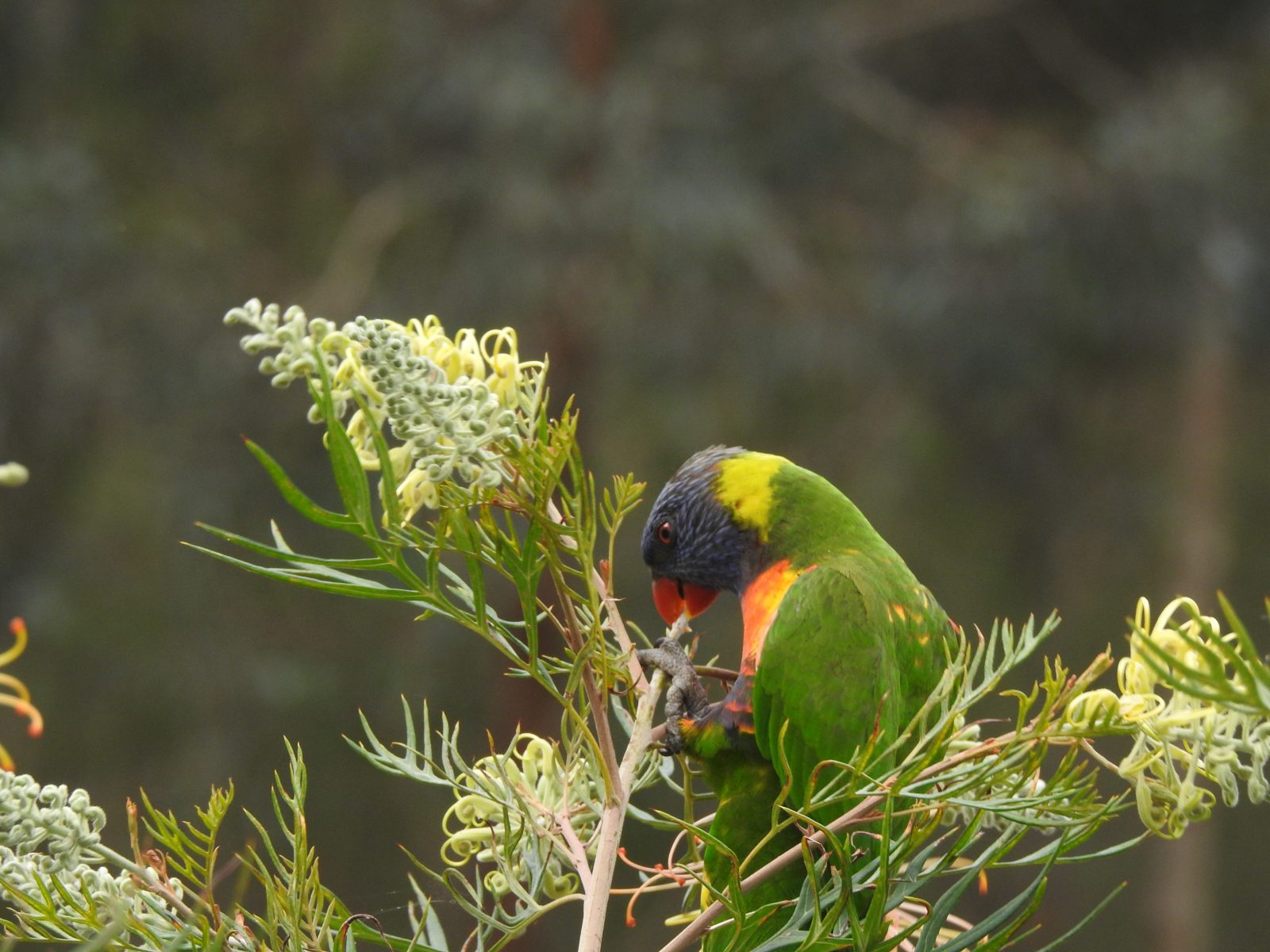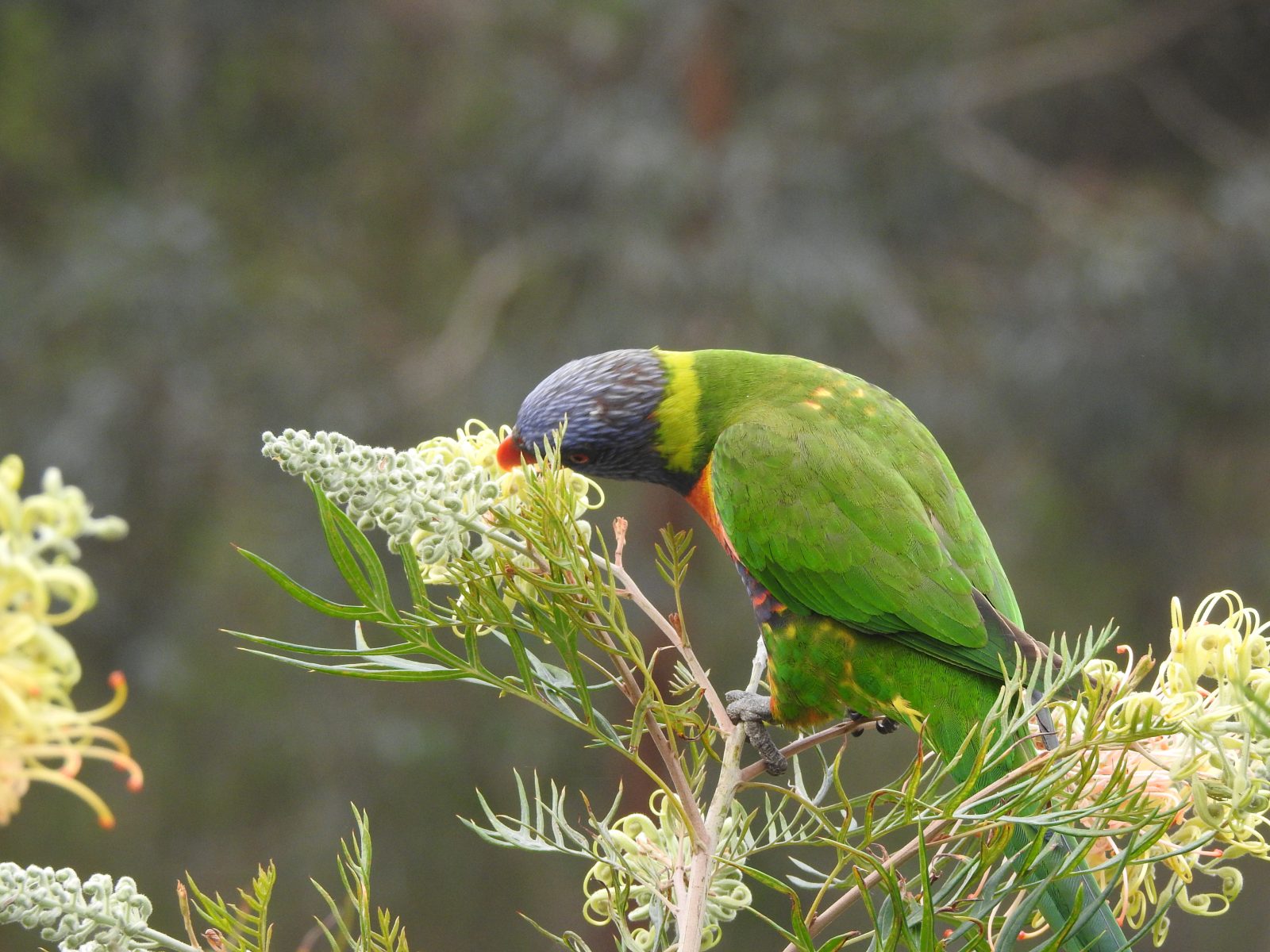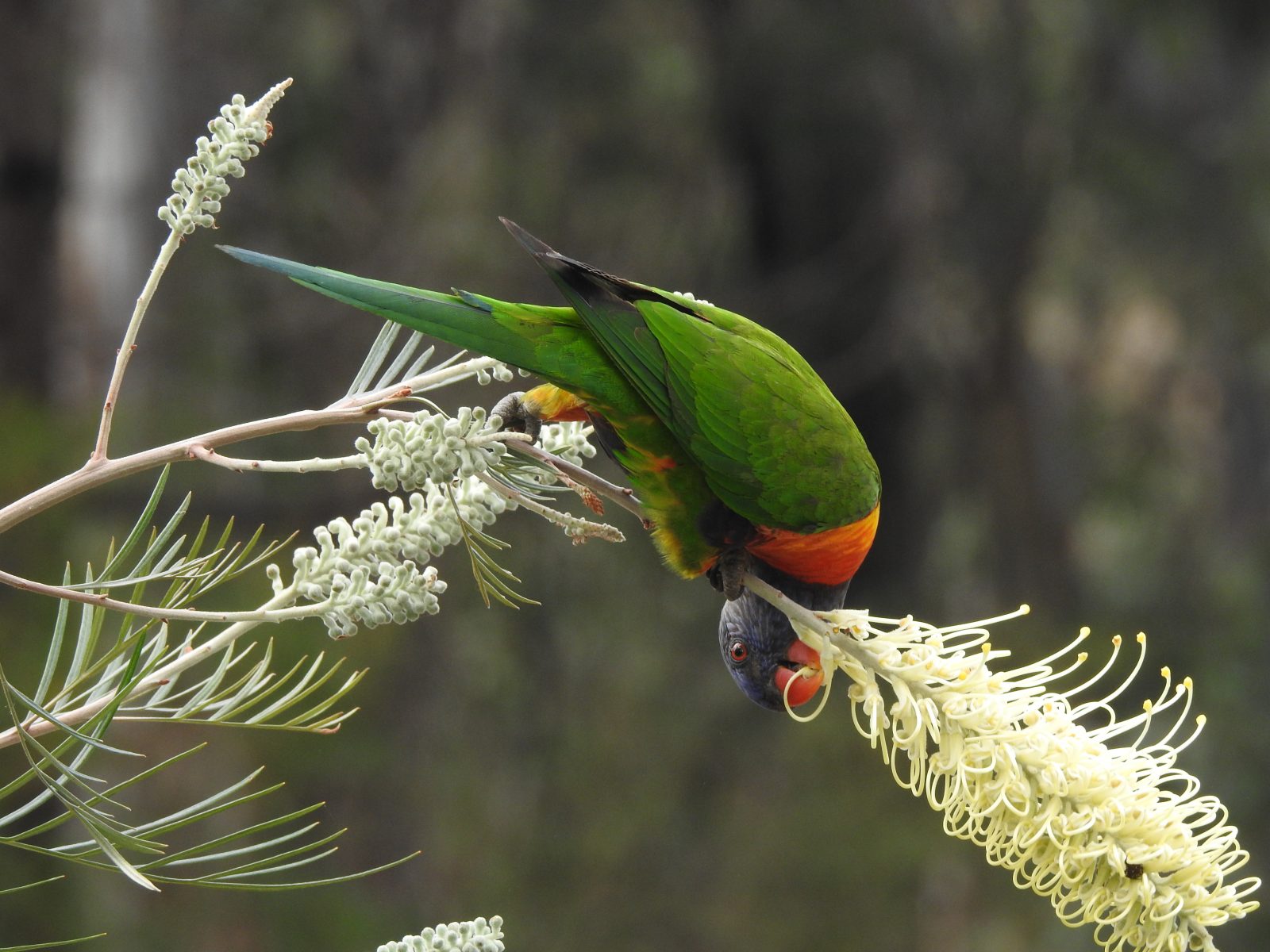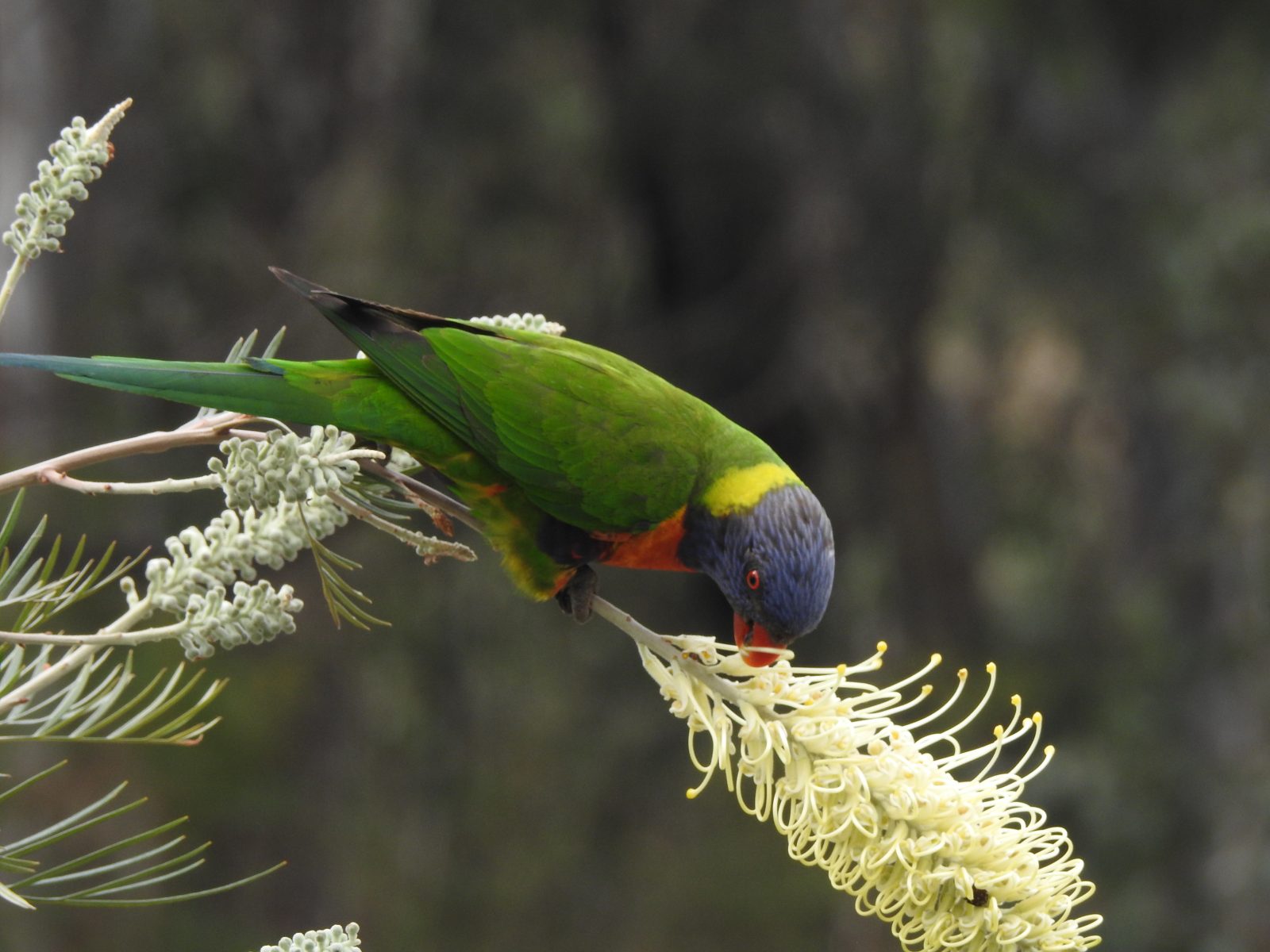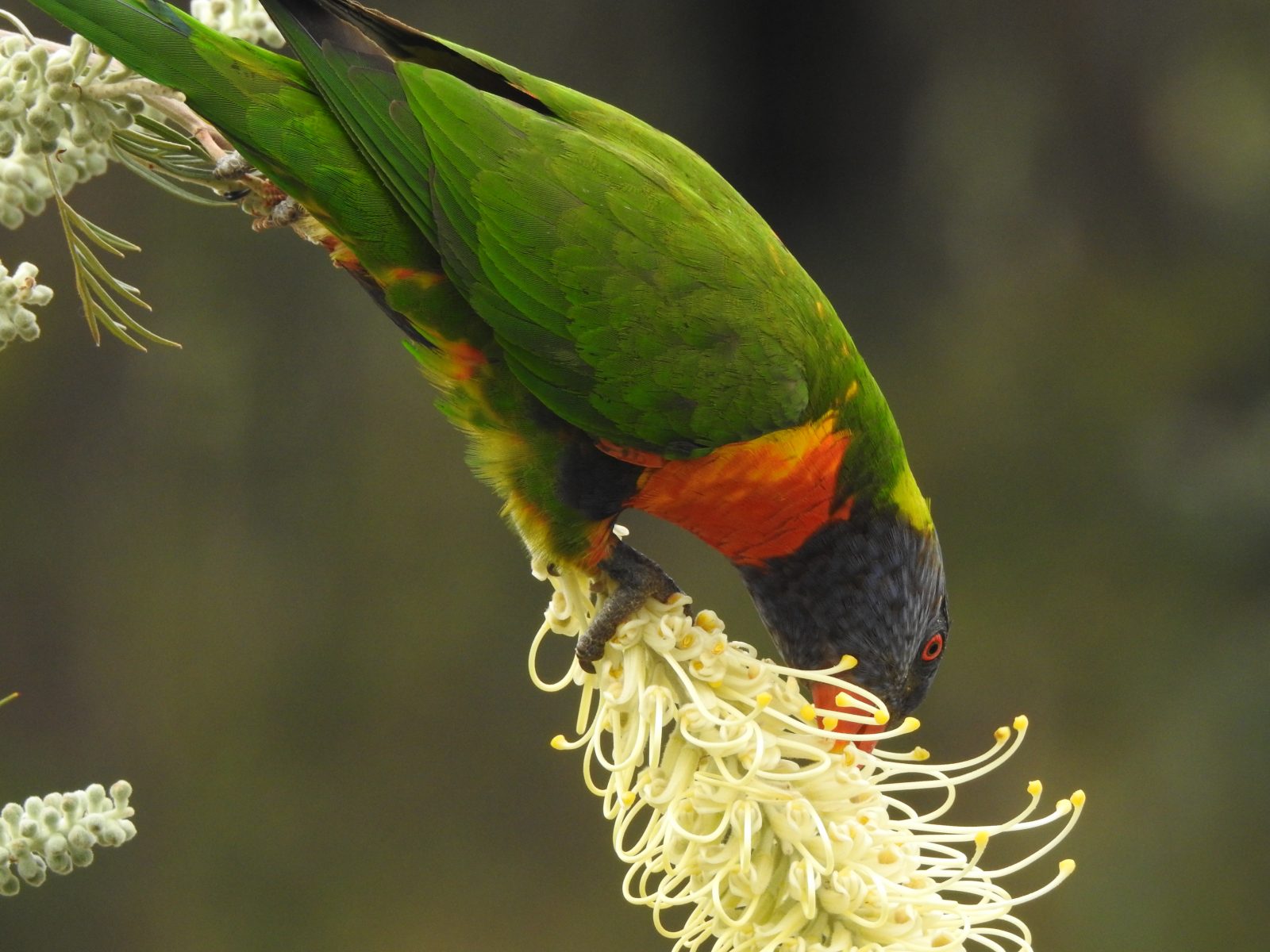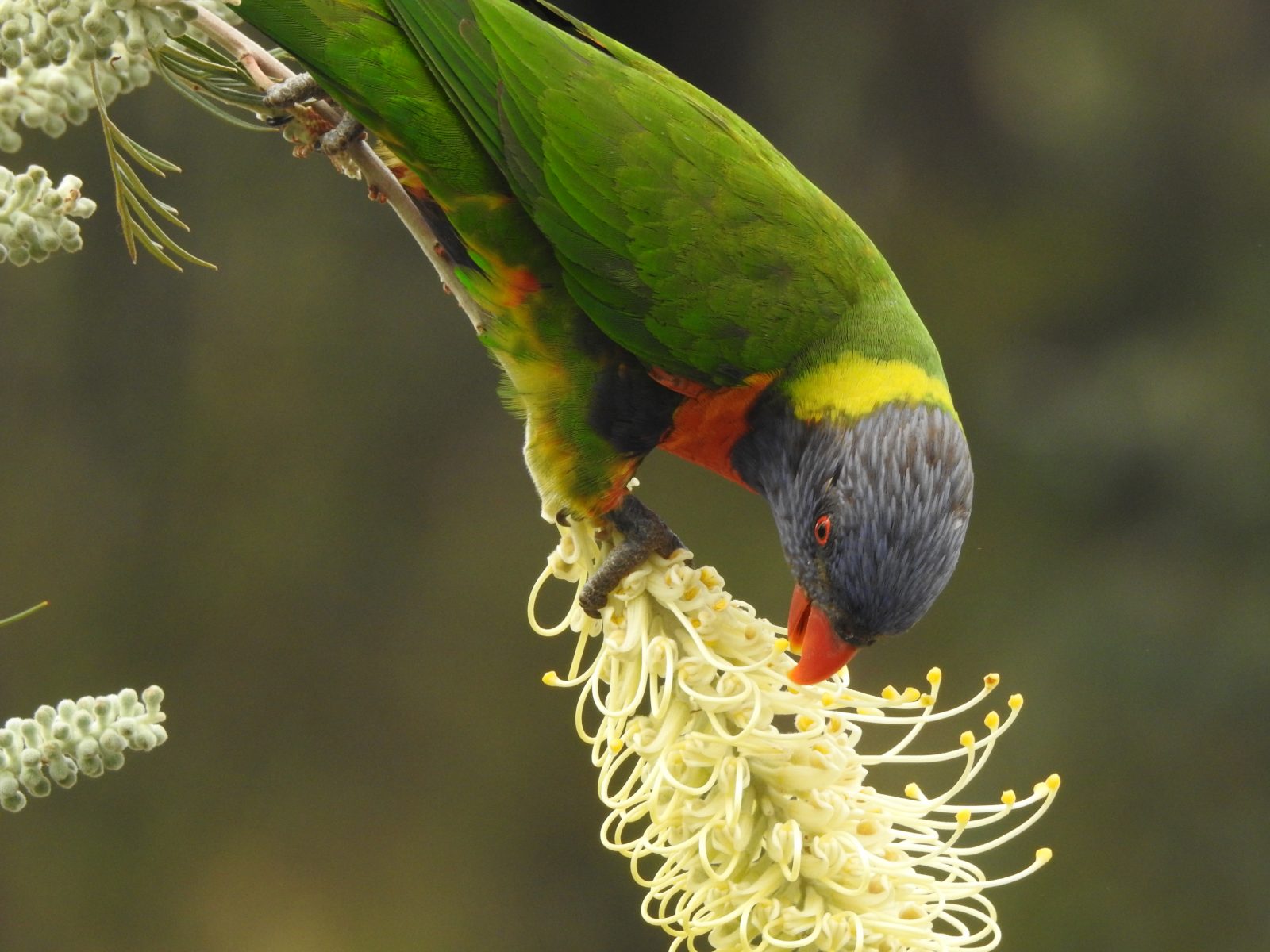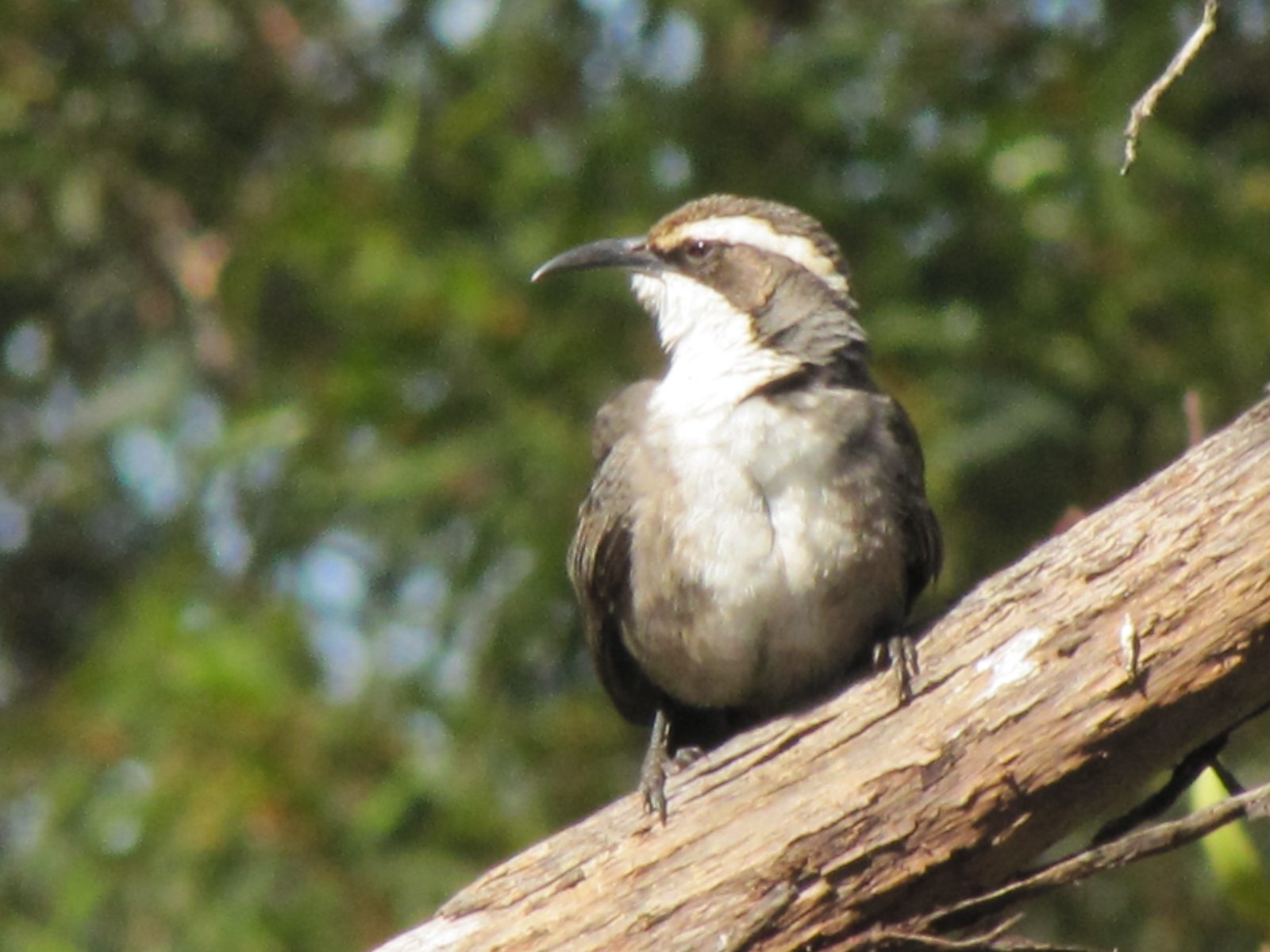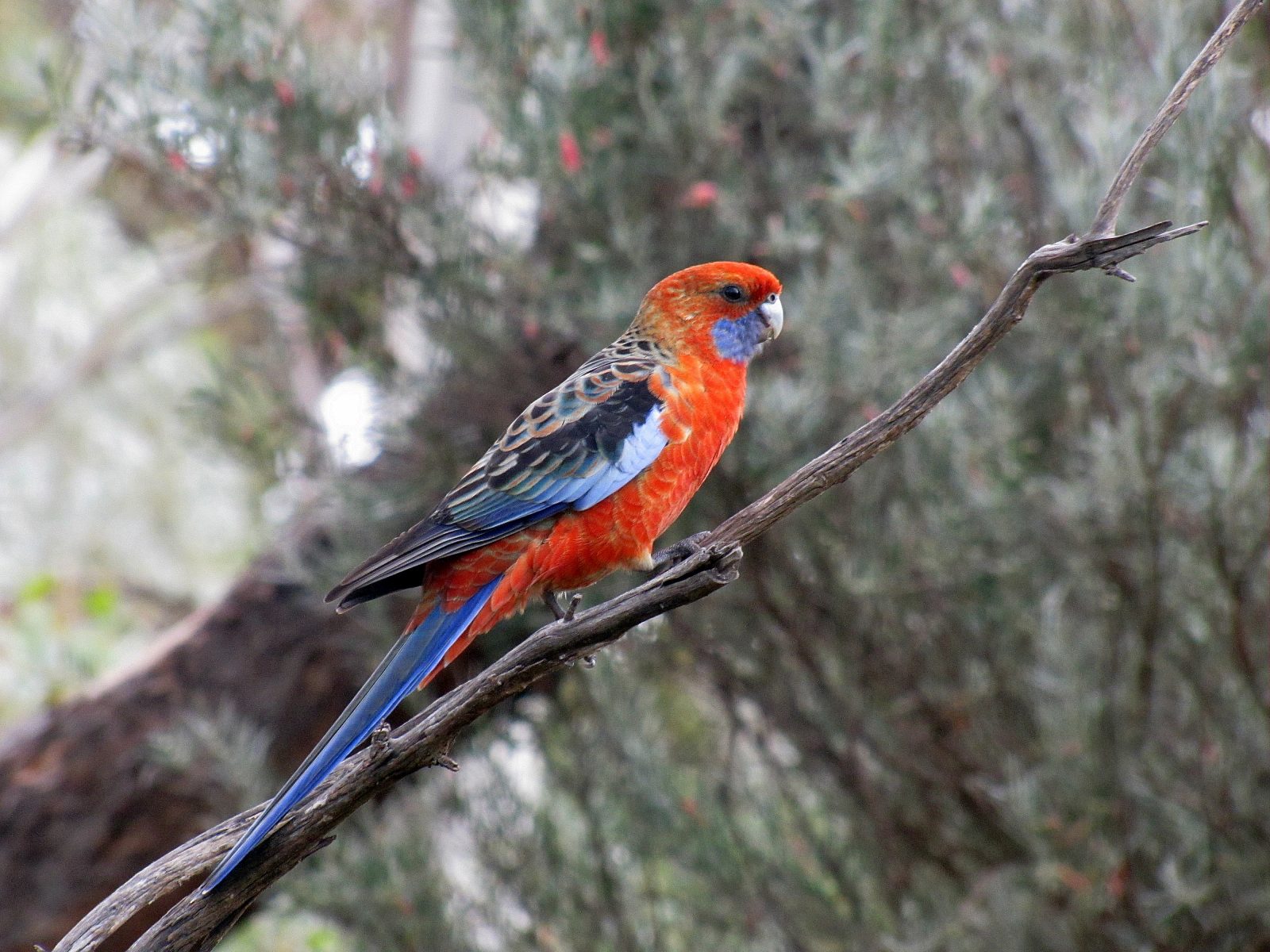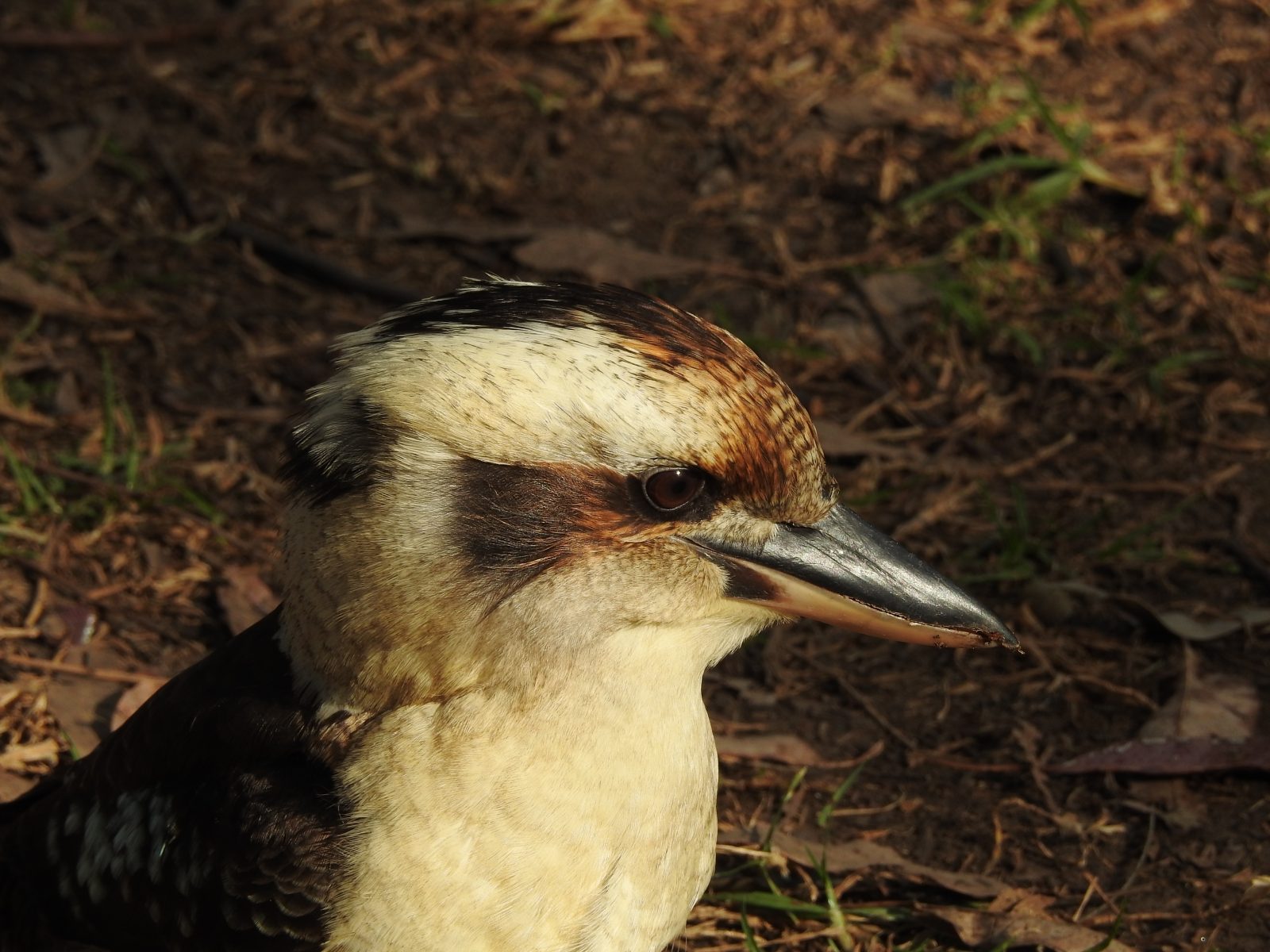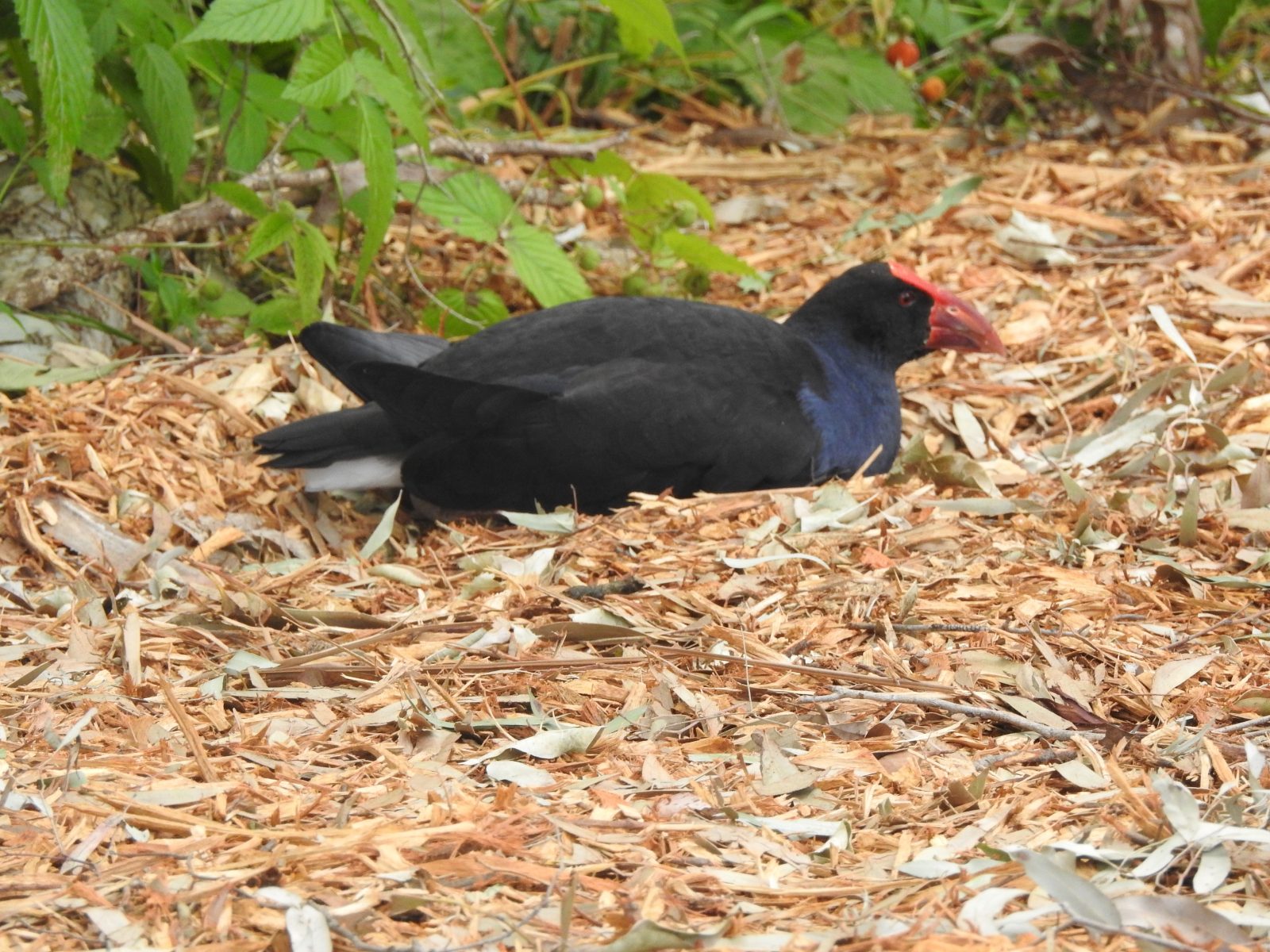
On my visit to the Australian Botanic Gardens in Mount Annan, SW Sydney last week I was surprised by the behaviour of the Purple Swamphen shown in the photo above. It didn’t seem to mind me walking past only a few metres away, nor was it concerned by the lady sitting at a picnic table about ten metres away.
I am not used to seeing Swamphens sitting down in this manner except when they are sitting to hatch their eggs. It almost looked as if it was in the process of actually hatching its eggs. Or was it just having a little rest? Normally, I am used to seeing Purple Swamphens strutting along elegantly on their long legs, rarely hurried and quite at ease with the world.
My error
There are two major flaws in my idea that it was preparing a nest, or sitting on eggs.
1. Swamphens usually make a nest in a stand of reeds, treading on them to make a flat platform on which they make a nest.
2. When I went past this spot some twenty minutes later, the bird had moved on.
I guess it really was just enjoying a quiet rest in a comfortable spot.
Further reading:
Article on the Birdlife Australia site
Article on the Australian Museum site
Purple swamphens at Sturt Reserve, Murray Bridge
Preening his feathers
